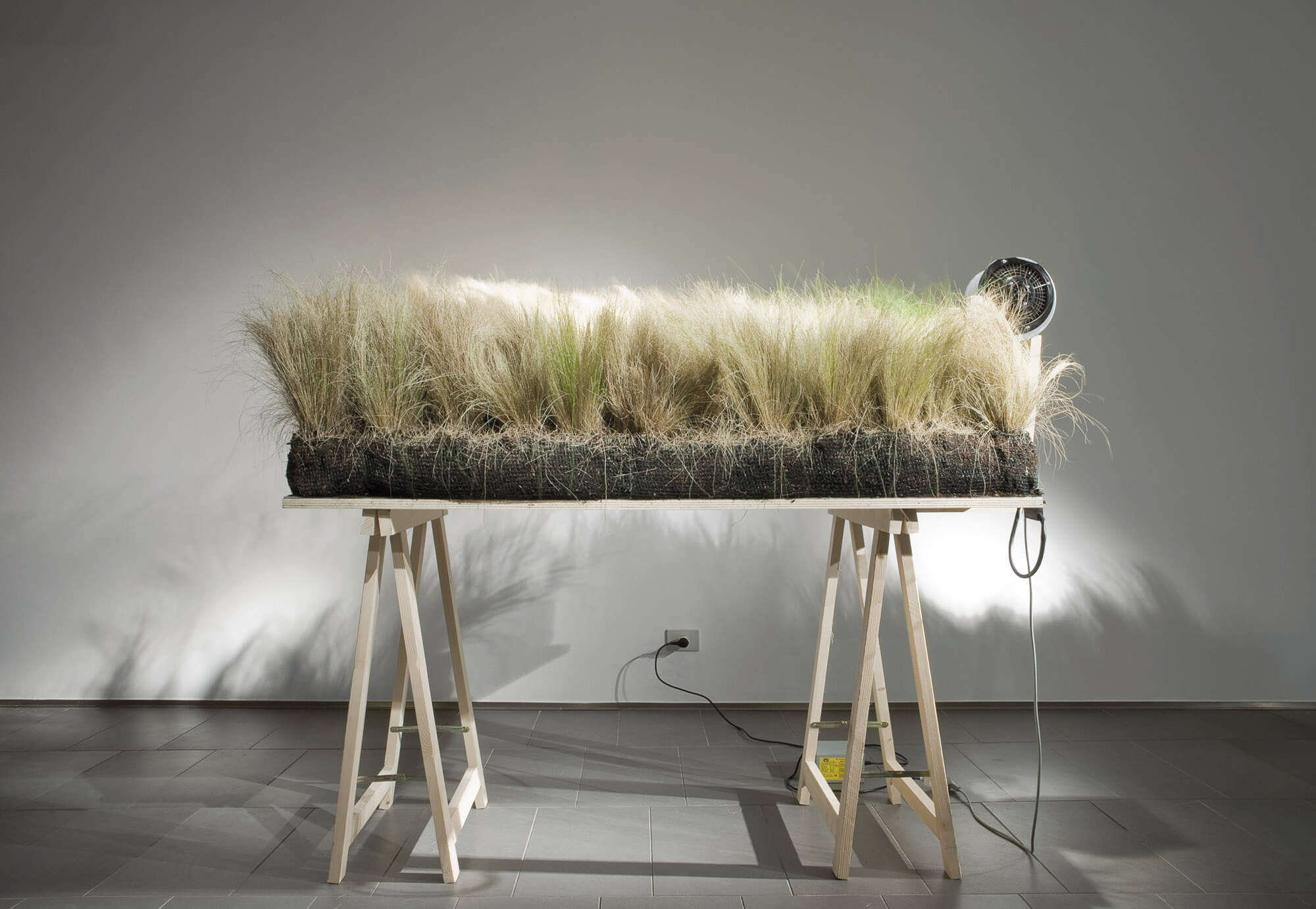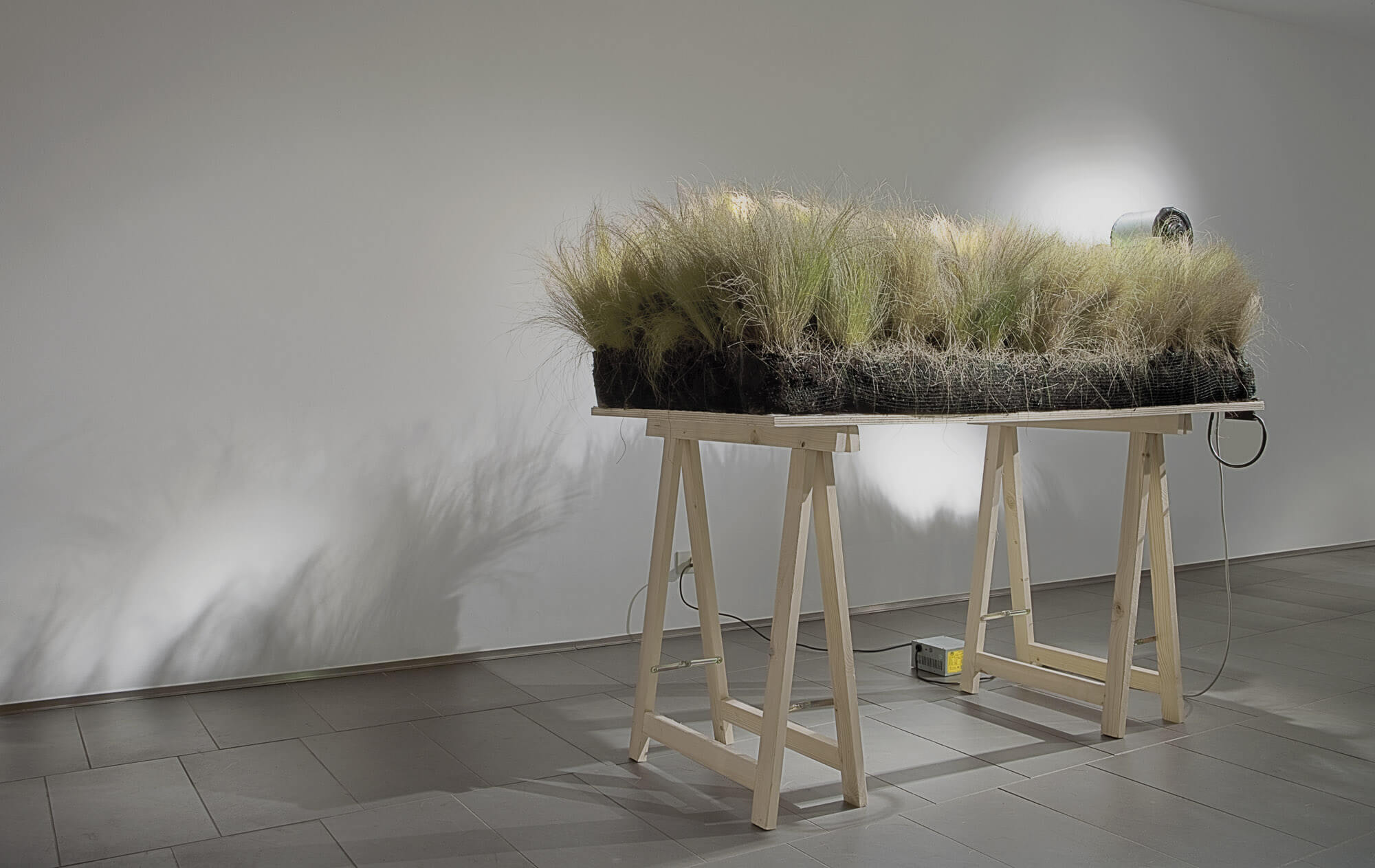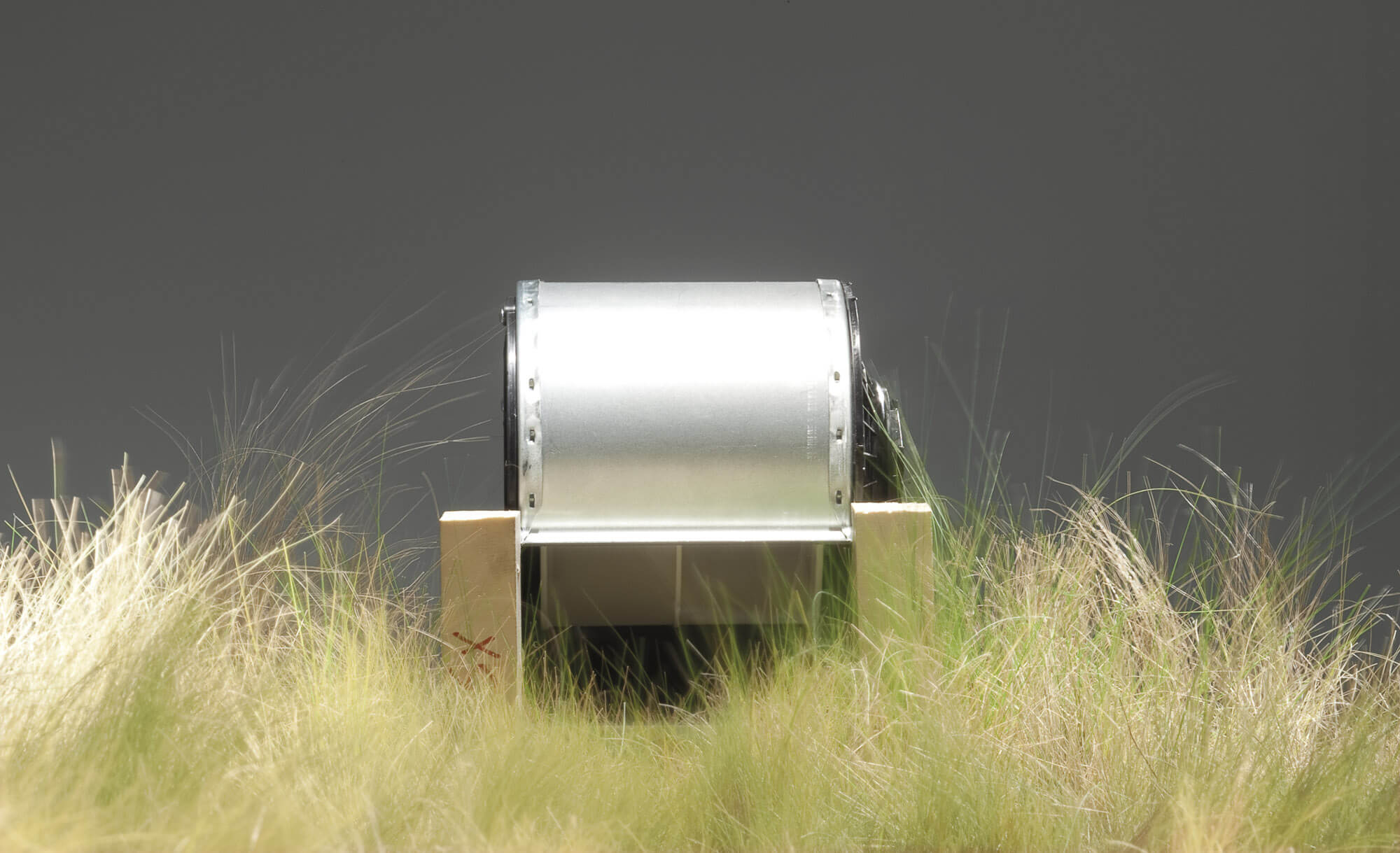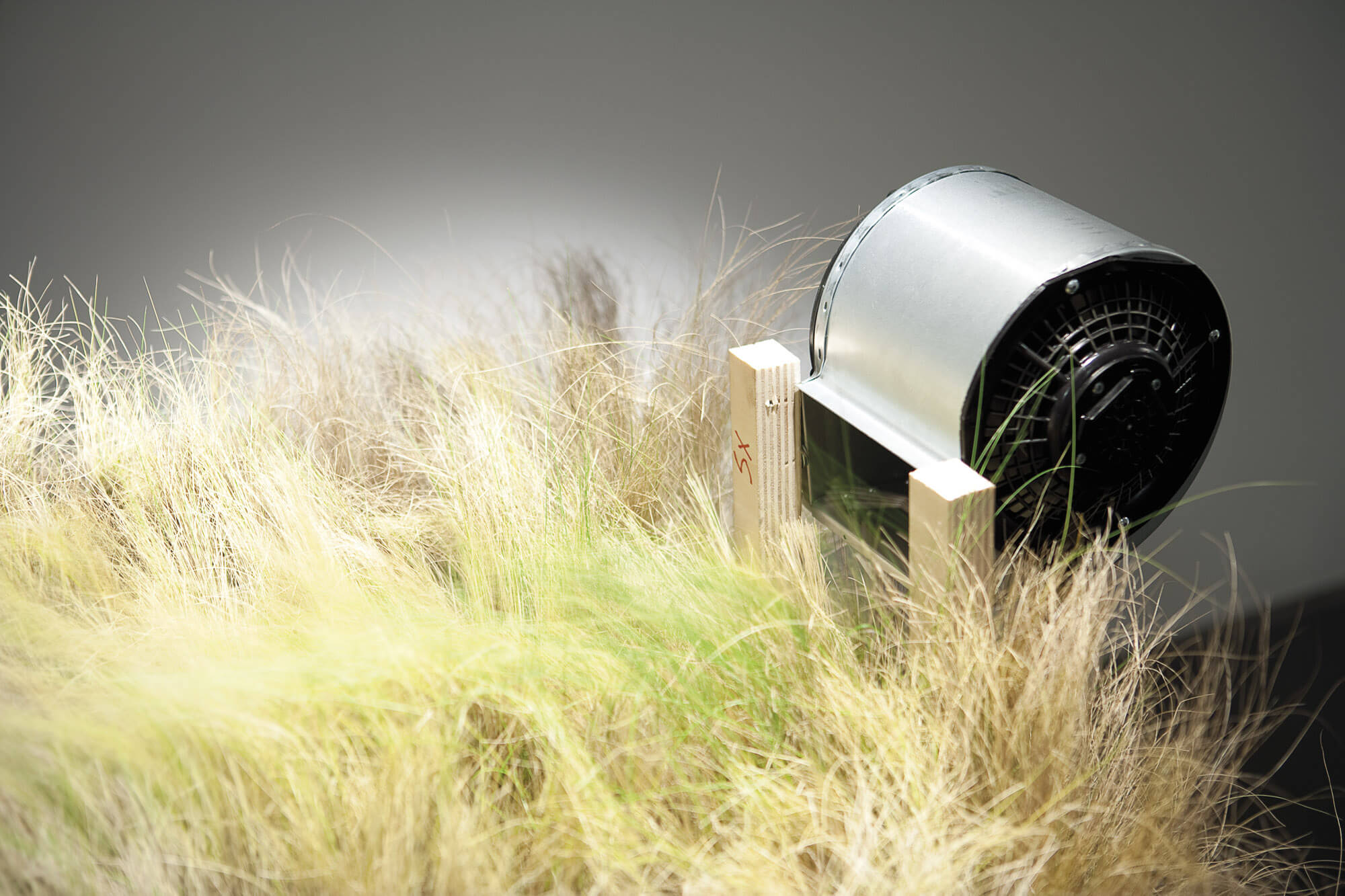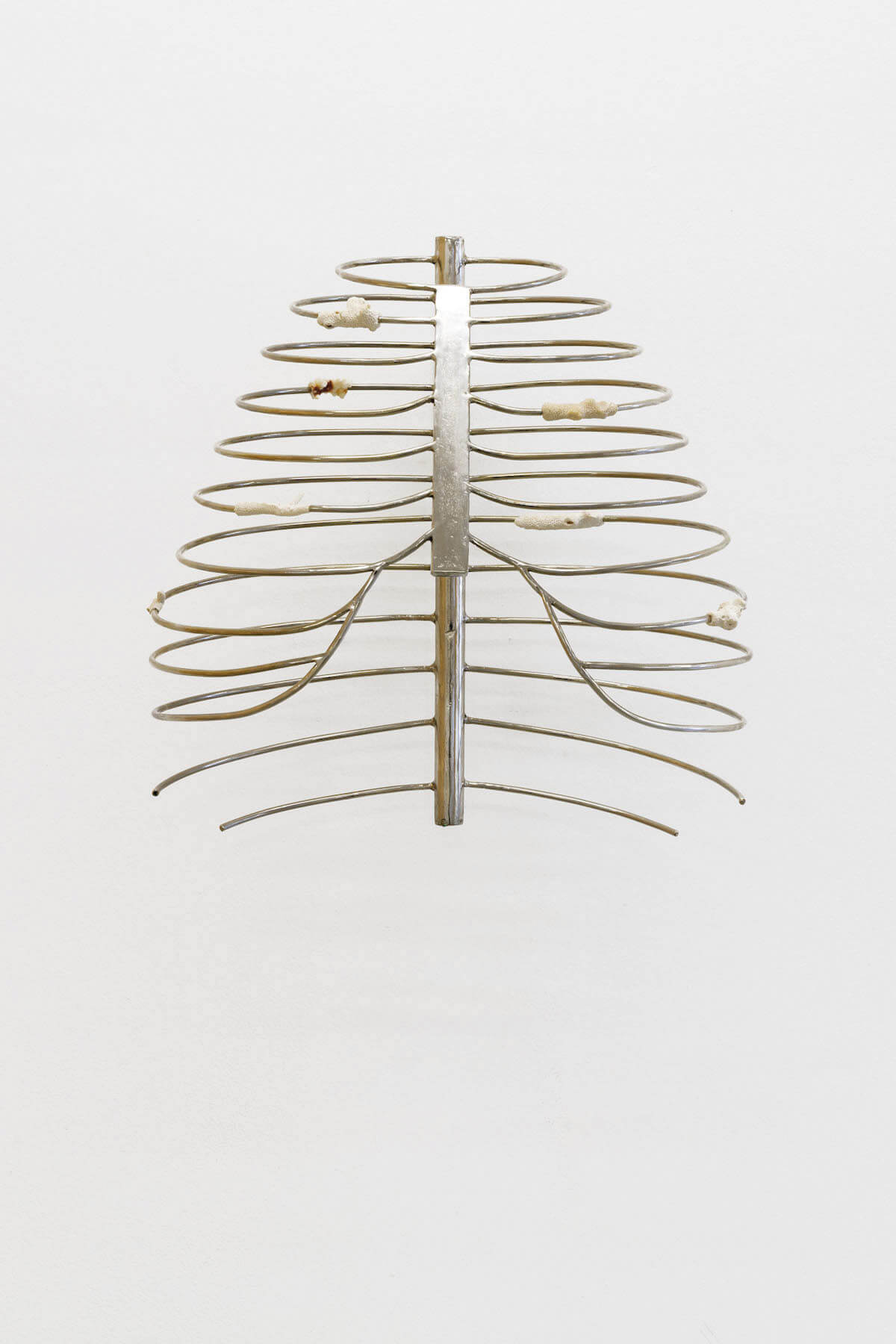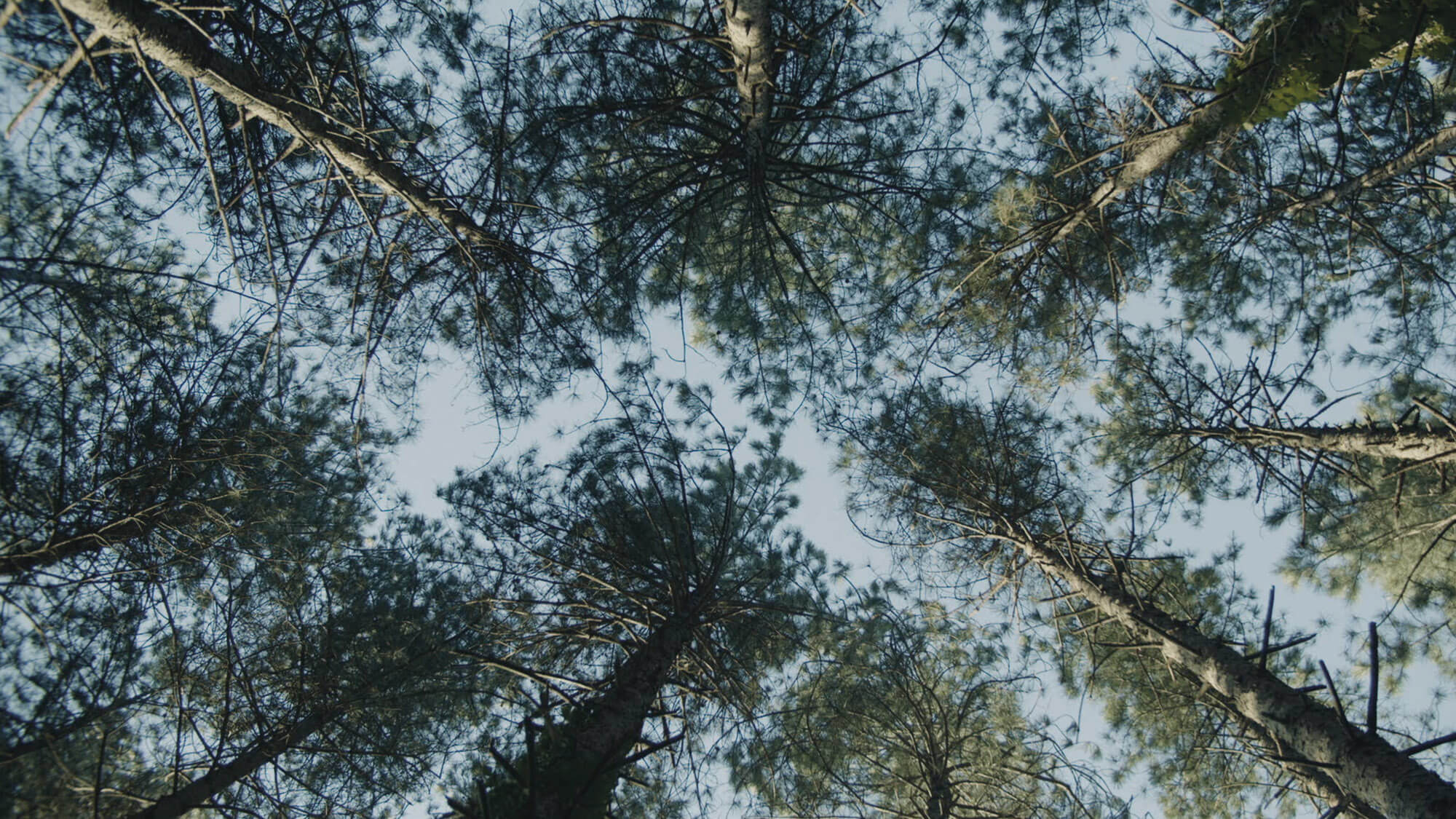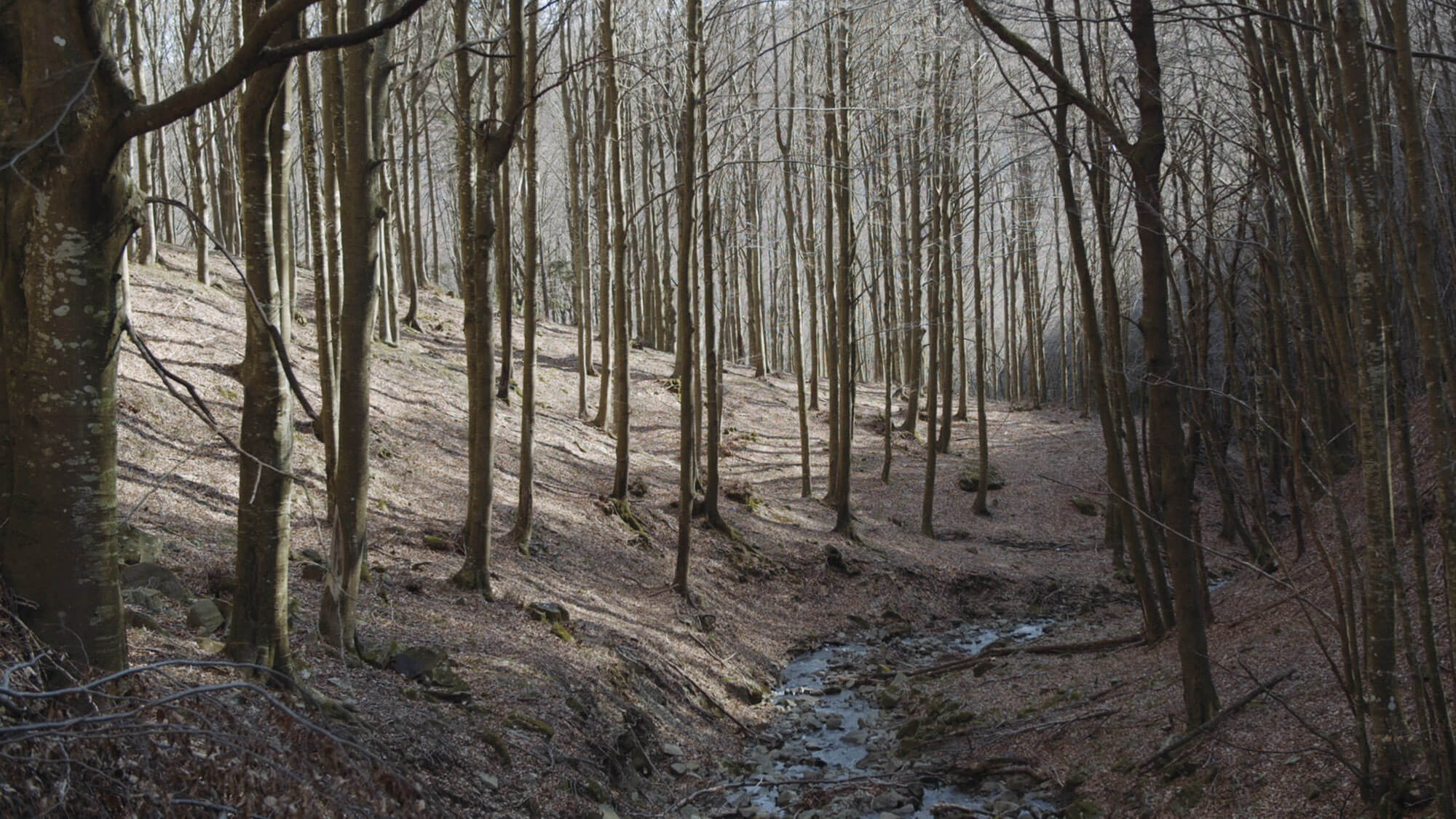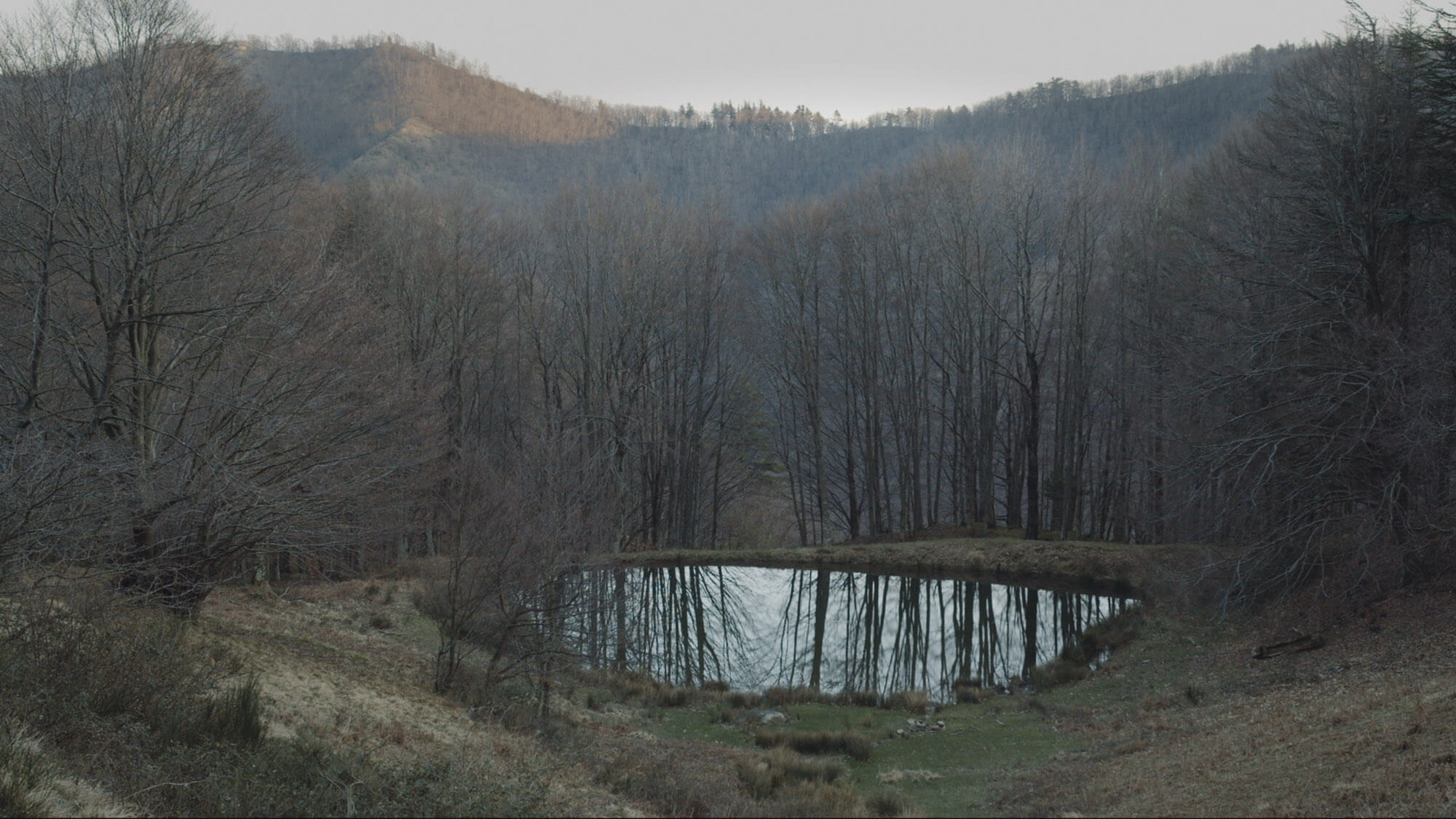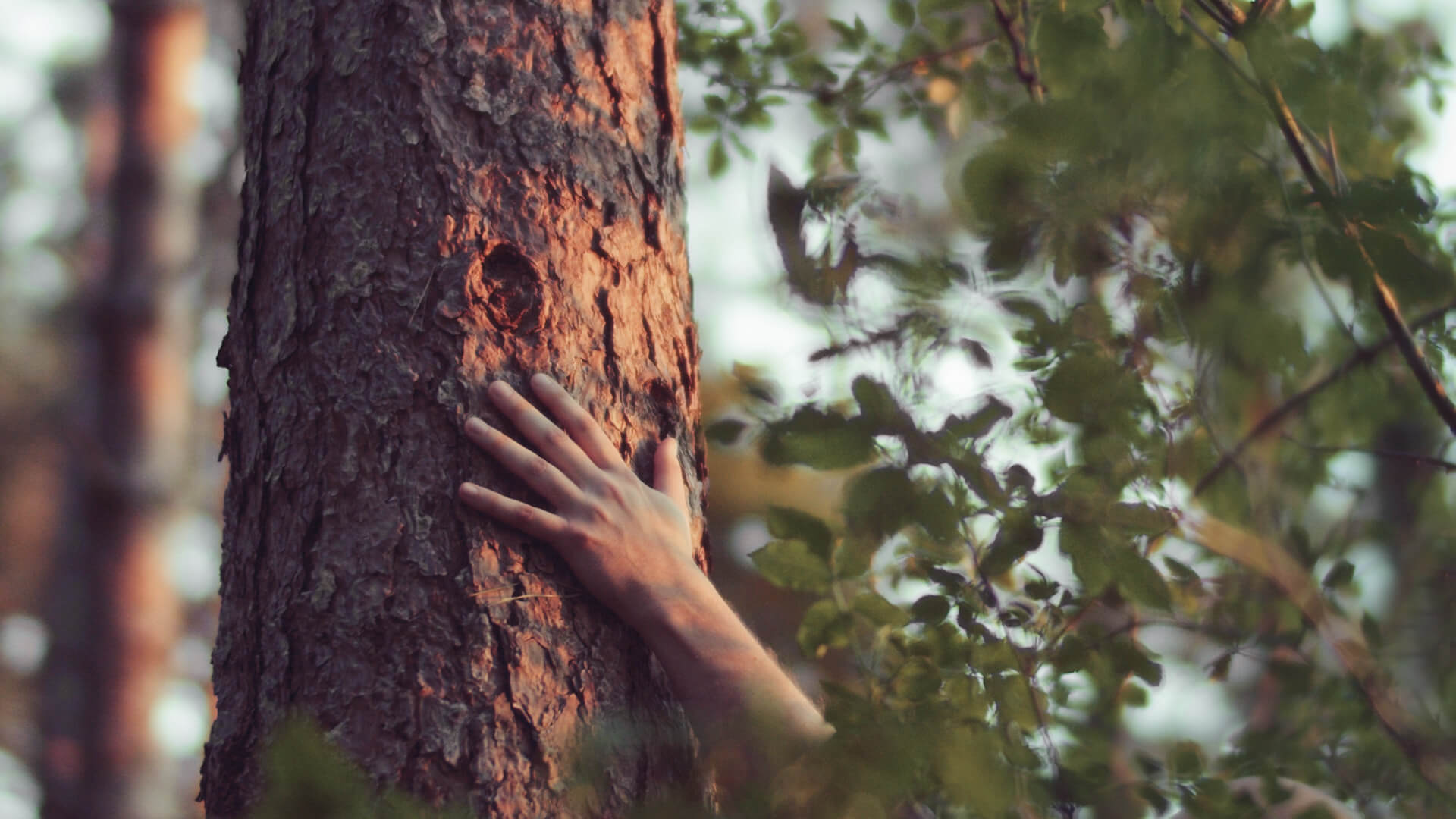Section 1
Michael FliriBio
The photographs in My Private Fog II present a performance by Michael Fliri.
The artist wears a number of transparent masks created out of a mould of stones and minerals
gathered on his hikes in the high mountains. Initially separate entities, the two bodies
gradually merge like inhabitants of the same atmospheric space.
The condensation generated by the breath gradually causes the artist’s face to disappear. It
transforms the surfaces into images reminiscent of snow-clad mountain silhouettes, glaciers or
rocky matter, underscoring the biological interaction between human being and nature. By making
visible what our eye tends not to see, Michael Fliri opens up a space of reflection on the
concepts of interaction and metamorphosis.
Bringing to mind late-19th-century research conducted by the physiologist Angelo Mosso on the
action of mountain air on the human body, the images make manifest the constant process of
exchange with the extra corporeal environment to which every human being is subject.
Michael Fliri
My Private Fog II, 2017
Photographs
Courtesy of the artist and Raffaella Cortese Gallery, Milan
Photos: Rafael Kroetz
Snow and Glaciers: Forms, Functions and Vulnerability
Experiences conducted in central and northern Europe have surprisingly demonstrated how
forest immersion in winter, in an environment with a layer of snow and ice on the
ground, can produce significant benefits for mental health, comparable with experiences
conducted in the spring and summer periods.1 A view of snow
and ice, with their relative repetitive structures – from great snow-covered expanses to
the tiniest ice crystal, the true prototype of the “fractal” form – is the most relaxing
thing and the least demanding of our attention. So, snow-covered winter environments
provide direct ecosystemic services for human health, and these are but the tip of the
iceberg of the services rendered by snowy and glacial environments.
In fact, snow cover and mountain and arctic glaciers render the fundamental ecosystemic
service of gradually releasing rainwater, preventing disastrous floods and ensuring a
relatively constant supply of water throughout the year to fulfil the demands of
irrigation, drinking water and hydroelectric energy generation. In the high-mountain
environment and at other high latitudes, the ice that remains all year round in the
subsoil – permafrost – ensures the stability of the slopes and the ground itself,
preventing instability and guaranteeing the stability of buildings.2
These natural elements are, however, subject to imminent danger: snow, ice and the
glaciers are truly among the elements most sensitive to climate change. Snowfall is
increasingly irregular, rises ever higher and the thawing cycle is ever more rapid,
undermining the sustainability of ski resorts and accelerating the water cycle.3 As well as economic and territorial consequences, the
presence and persistence of snow or ice has always represented the passing of the
seasons and, more in the long term, changes to the high-mountain landscape. The swift
retreat and increasingly marked loss of both the snow and entire glacier systems, with
processes now measured in terms of the decade if not a few years, is a source of anxiety
and stress for mountain residents and for all high-mountain lovers and visitors who have
often been frequenting them for their entire lives.
The alpine glaciers have lost 70% of their volume in just over a century, making way for
scree, landslides and risks for mountaineers.4 Following
catastrophic collapse, the glaciers of Greenland and west Antarctica are threatening to
flood coastlines worldwide.5, 6 The expanse of Arctic sea
ice, perhaps the most obvious indicator of climate change, has more than halved in
summer over the last 40 years, in a spiral that, in still uncertain times, might lead to
a remodelling of all the Great Northern landscape with fatal consequences for fauna and
local populations, and perhaps destined to generate a terrible new scenario of conquest
and war.7
— Francesco Meneguzzo, Federica Zabini
Institute of BioEconomy, CNR - Sesto Fiorentino (FI) CAI Central Scientific Committee
- A. Peterfalvi, M. Meggyes, L. Makszin, N. Farkas, E. Miko, A. Miseta, L. Szereday, “Forest bathing always makes sense: Blood pressure-lowering and immune system-balancing effects in late spring and winter in central europe”, International Journal of Environmental Research and Public Health, 18(4), 2021, 1–20. LINK→
- E. E. Webb, A. K. Liljedahl, J. A. Cordeiro, M. M. Loranty, C. Witharana, J. W. Lichstein, “Permafrost thaw drives surface water decline across lake-rich regions of the Arctic”, Nature Climate Change, 12(9), 2022, pp. 841–846. LINK→
- H. François, R. Samacoïts, D. N. Bird, J. Köberl, F. Prettenthaler, S. Morin, “Climate change exacerbates snow-water-energy challenges for European ski tourism”, Nature Climate Change, 13(9), 2023, pp. 935–942. LINK→
- M. Carrer, R. Dibona, A. L.Prendin, M.Brunetti, “Recent waning snowpack in the Alps is unprecedented in the last six centuries”. Nature Climate Change, 13(2), 2023, pp. 155–160. LINK→
- L. J. Larocca, M. Twining–Ward, Y. Axford, A. D. Schweinsberg, S. H. Larsen, A. Westergaard–Nielsen, G. Luetzenburg, J. P. Briner, K. K. Kjeldsen, A. A. Bjørk, “Greenland-wide accelerated retreat of peripheral glaciers in the twenty-first century”, Nature Climate Change, 13(12), 2023, pp. 1324–1328. LINK→
- K. A. Naughten, P. R. Holland, J. De Rydt, “Unavoidable future increase in West Antarctic ice-shelf melting over the twenty-first century”, Nature Climate Change, 13(11), 2023, pp. 1222–1228. LINK→
- D. Topál, Q. Ding, “Atmospheric circulation-constrained model sensitivity recalibrates Arctic climate projections”, Nature Climate Change, 13(7), 2023, pp. 710–718. LINK→
Alberto Di FabioBio
Born in 1966 in Avezzano, in the province of L’Aquila, with an artist father and a
natural-science teacher mother, Alberto Di Fabio has always been deeply bound to the land of his
origins. The high uplands of Marsica in the Abruzzi in Central Italy formed the background for
his entire childhood; they were the subjects of his earliest drawings and certainly the primary
source of inspiration for an artistic output that has constantly evolved over time.
From these beginnings, mountains – what the artist would call a “goddess, almost a divinity” –
would be constantly depicted, first through canvases and works on paper, then through
environmental wall paintings.
Since his early works, Di Fabio has been inspired by the world of natural sciences including
biology, chemistry and astronomy. His painting explores atoms, cell structures, neurons, DNA
chains, constellations and galaxies in a constant attempt to decipher the laws of the universe
and depict the invisible processes that govern relations between the living and non-living
worlds.
The large wall painting entitled Materia invisibile encapsulates all the sensations
experienced
by the artist on one of his first encounters with the mountain environment: the energy emanated
by light, the smell of falling rain, the allure of the surrounding landscape and that of the
blue, azure, grey and white sky above him. With a gestural and performance painting centred on
extremely physical and emotional participation and the use of his own optical and mental
microscope, Alberto Di Fabio accompanies onlookers on a journey through the mystery of matter,
through the forms and consistencies of the heterogeneous, molecular and subatomic structure of
nature.
Seeing Nature
The sense of well-being and relaxation experienced before natural landscapes compared
with man-made ones is already established and documented.
The first explanation stems from the fact that human beings respond in a far simpler and
more immediate manner to stimuli present in the natural environment than in artificial
ones – that is, with more “fluid perception” (the ease with which a stimulus is
processed by the brain).1-2
For example, processing visual stimuli connected to natural environments requires less
effort of us than to artificial ones, as demonstrated by several studies analysing the
activation of different parts of the brain and eye movement according to the stimuli
presented to us.2
Somehow, it is as if we were “programmed” to easily process the stimuli present in the
natural environment, which has been our habitat for the greater part of human history.
This is why certain features of natural environments, from geometric forms to the
variability of sunlight and the soundscape, demand low levels of attention and cognitive
load.
Several studies in the neuroscience field have, for instance, shown that people prefer
so-called “fractal” shapes, that is repetitive and recursive ones. These structures are
typical and frequent in natural environments as opposed to anthropomorphic ones.3-4 Forests, just like every single tree, are quintessential
examples of fractal geometric structures. They are composed of similar structures which
are repeated on different, ever smaller, spatial scales: the branches of a tree look
like small versions of the tree itself and this applies down to the twigs and tiniest
ramifications.
Visualising repetitive scenes encourages relaxation and therefore reduces the activity
of the sympathetic system, particularly “hyperactive” in patients suffering from
depression and anxiety, producing genuine therapeutic effects in these subjects but also
in so-called “healthy” individuals in general.5
As well as the presence of repetitive structures (trees, forests), the mountain
environment can also be a place of well-being merely because it is generally located far
away from man-made infrastructures: well-being prompted by silence, punctuated by the
relaxing sounds of the forest, as too by the quality of the night sky. In fact, darkness
– in Italy found now only on a few remote islands and the most isolated mountain
scenarios – translates into an opportunity to reconnect with an essential component of
natural well-being. And yet, more than 70% of the world’s population has never seen the
Milky Way: vegetation, fauna and humans themselves are subjected to constant and
potentially harmful stress because of the poor quality of nocturnal darkness.6
— Francesco Meneguzzo, Federica Zabini
Institute of BioEconomy, CNR - Sesto Fiorentino (FI) CAI Central Scientific Committee
- S. Kaplan, “The restorative benefits of nature: Toward an integrative framework”, Journal of Environmental Psychology, 15(3), 1995, 169–182.
- A. E. van den Berg, Y. Joye, S. L. Koole,“Why viewing nature is more fascinating and restorative than Koole, viewing buildings: A closer look at perceived complexity”, Urban Forestry and Urban Greening, 20, 2016, pp. 397–401. LINK→
- Y. Joye, A. van den Berg “Is love for green in our genes? A critical analysis of evolutionary assumptions in restorative environments research”, Urban For Urban. Greening, 10, 2011, pp. 261–268. LINK→
- C. M. Hagerhall, T. Laike, R. P. Taylor, M. Küller, R. Küller, T. P. Martin, “Investigations of human EEG response to viewing fractal patterns”, Perception, 37(10), 2008, pp. 1488–1494. LINK→
- Song, Chorong, et al., “Physiological Effects of Visual Stimulation with Forest Imagery”, International Journal of Environmental Research and Public Health, 15(2), 2018. LINK→
- E. Mazzoleni, M. Vinceti, S. Costanzini, C. Garuti, G. Adani, G. Vinceti, G. Zamboni, M. Tondelli, C. Galli, S. Salemme, S. Teggi, A. Chiari, T. Filippini, “Outdoor artificial light at night and risk of early-onset dementia: A case-control study in the Modena population, Northern Italy”. Heliyon, 9(7), 2023 , e17837. LINK→
Andrea NacciarritiBio
Stipa tenuissima plants contained in a piece of turf are moved by the air generated by a
fan.
Andrea Nacciarriti has reconstructed a portion of a field swept by an artificially created gust
of wind. In doing so, he has recreated a natural mechanism and brought what habitually happens
outdoors indoors.
The work stems from the artist’s desire to visualise the air, a typically invisible element
which only becomes perceptible via the effects it produces when it becomes wind and the pressure
of its molecules encounters matter.
With this work, Nacciarriti invites us to consider the role and impact that the non-visible part
of nature exercises on us. The artist urges our gaze to go beyond the threshold of the visible.
As is often the case in his practice, it is through the power of synthesis that the artist is
able to propose representations of great conceptual, symbolic and aesthetic power.
Air as Eros and Thanatos
Despite Aristotle’s ancient intuition, the fact that air has mass and so can exercise
pressure was only fully understood 500 years ago by Galileo Galilei and Evangelista
Torricelli. Continuously powered by the sun, wind and pressure play an endless
two-handed game, with pressure gradients creating wind and wind equalising differences
in pressure. At all scales, wind is determined by the atmospheric pressure gradient, as
well as by the Coriolis force resulting from the Earth’s rotation. In their turn,
pressure gradients form in response to differences in heating, usually inherent in
different insolation, both at ground level and along the atmospheric column. Thanks to
the research of the Russian physicists Anastassia Makarieva and Victor Gorshkov, since
the end of the 2000s, it has been posited – and then widely confirmed – that the great
natural forests, both tropical and boreal, generate far-reaching pressure gradients
through the transpiration of water vapour and subsequent condensation and immense heat
release. In this way, the great forests – but only natural, balanced ones – are capable
of “recycling” the masses of moist ocean air, transporting it for thousands of
kilometres and thus bringing rain to areas that would otherwise be semi-deserts.1, 2 This is the so-called “biotic pump” that generates
rainfall and therefore networks of life.
Air is like Eros and Thanatos. Oxygen gives life, enabling cellular respiration, and, at
the same time, oxidises and destructs our cells. Other compounds in the air are,
instead, a direct consequence of our lifestyle: rich in either pollutants or in
beneficial compounds, certain terpenes – components of essential oils – in particular
among the latter, are emitted by the trees and ground of forests, as confirmed by
consolidated scientific evidence. Over the long period in history when humans inhabited
the forest, our organism adapted to best exploit the properties of the forest
atmosphere. That is why whenever we immerse ourselves in the forest, certain terpenes
become significant vehicles of mental (anxiolytic, sedative) and physiological
(antioxidant, anti-inflammatory, anti-proliferative and activating immune defences)
well-being.3-5
On a global level, more than 90% of people breathe air that does not meet World Health
Organization (WHO) standards. As well as damage to the cardio-respiratory system, recent
scientific evidence points to a connection between some neurological issues and air
pollution, relative to both neurodevelopmental disorders in children and to
neurodegenerative diseases in adults.6
For example,
research conducted by a team of Mexican
scientists found changes in the structure of the brain, cognitive deficits and
pathologies similar to Alzheimer’s disease in a group of children in Mexico City – the
most polluted city in the world according to the United Nations – compared to children
who live in a less polluted city.7
Another study on almost three thousand schoolchildren in Barcelona found that cognitive
development was slower in students who attended schools with greater traffic
pollution.8
A growing number of studies supports the claim that greater exposure to atmospheric
pollution is associated with a decline in cognitive functions in adults or is, in any
case, a significant risk factor in cognitive decline and dementia in the elderly.9
— Francesco Meneguzzo, Federica Zabini
Institute of BioEconomy, CNR - Sesto Fiorentino (FI) CAI Central Scientific Committee
- A. M. Makarieva, A. V. Nefiodov, A. D. Nobre, M. Baudena, U. Bardi, D. Sheil, S. R. Saleska, R. D. Molina, A. Rammig, “The role of ecosystem transpiration in creating alternate moisture regimes by influencing atmospheric moisture convergence”, Global Change Biology, 29(9), 2023, pp. 2536–2556. LINK→
- E. Gies, “More than carbon sticks”, Nature Water, 1(10), 2023, pp. 820–823. LINK→
- M. Antonelli, D. Donelli, G. Barbieri, M. Valussi, V. Maggini, F. Firenzuoli, “Forest volatile organic compounds and their effects on human health: A state-of-the-art review”, International Journal of Environmental Research and Public Health, 17(18), 2020, pp. 1–36. LINK→
- D. Donelli, F. Meneguzzo, M. Antonelli, D. Ardissino, G. Niccoli, G. Gronchi, R. Baraldi, L. Neri, F. Zabini, “Effects of plant-emitted monoterpenes on anxiety symptoms: A propensity-matched observational cohort study”, International Journal of Environmental Research and Public Health, 20(4), 2023, 2773. LINK→
- D. Donelli, M. Antonelli, R. Baraldi, A. Corli, F. Finelli, F. Gardini, G. Margheritini, F. Meneguzzo, L. Neri, D. Lazzeroni, D. Ardissino, G. Piacentini, F. Zabini, A. Cogo, “Exposure to Forest Air Monoterpenes with Pulmonary Function Tests in Adolescents with Asthma: A Cohort Study”, Forests, 14(10), 2012. LINK→
- P.J. Landrigan, “Air Pollution and Health”. The Lancet Public Health, 2(1), 2017, pp. 4–5. LINK→
- L. Calderón-Garcidueñas, R. Torres-Jardón, R.J. Kulesza, Y. Mansour, L. González-González, A. Gónzalez-Maciel, R. Reynoso-Robles, P.S. Mukherjee, “Alzheimer disease starts in childhood in polluted Metropolitan Mexico City. A major health crisis in progress”, Environmental Research, 183, 2020, 109137. LINK→
- P. Dadvand, J. Pujol, D. Macià, G. Martínez-Vilavella, L. Blanco-Hinojo, M. Mortamais, M. Alvarez-Pedrerol, R. Fenoll, M. Esnaola, A. Dalmau-Bueno, M. López-Vicente, X. Basagaña, M. Jerrett, M. J. Nieuwenhuijsen, J. Sunyer, “The Association between Lifelong Greenspace Exposure and 3-Dimensional Brain Magnetic Resonance Imaging in Barcelona Schoolchildren”, Environmental Health Perspectives, 126(2), 2018, 027012. LINK→
- J. McLachlan, S.R. Cox, J. Pearce, M. Valdés Hernández, “Long-term exposure to air pollution and cognitive function in older adults: a systematic review and meta-analysis”, Frontiers in Environmental Health, 2, 2023. LINK→
Nona InescuBio
Using video, sculpture, photography and installations, Nona Inescu gives shape to studies centred
on redefining relations between the human and non-human body.
Adopting post-humanism as her preferred viewing mechanism, the artist forces physical and
conceptual visions with the aim of activating a speculative gaze.
Deep Breathing is a metal reproduction of a human rib cage, in which a series of
whitish colored
marine corals – in the phase of being formed can be seen.
The concepts of body, geological time and matter, reinterpreted on the basis of a new biological
awareness and a new cultural perspective, produce a porous aesthetic in which the contamination
between inside and outside, living and non living, human and other than human,
I and the other
is clearly evident.
Nona Inescu
Deep Breathing, 2019
Chrome steel, coral fragments
Collezione Katja Zigerlig, New York
Courtesy the artist and Catinca Tabacaru Gallery, Bucarest
Breathing in the Woods
Although generally an unconscious act, breathing forms the basis of our exchange with the
outside world: in fact, when we immerse ourselves in a wood, we inhale volatile
substances emitted into the forest atmosphere by vegetation and the ground.
Forest ecosystems release large quantities of these substances, called BVOCs (biogenic
volatile organic compounds).1 These are molecules, whether
heavy or light, formed of carbon and hydrogen; some also of oxygen. They fall under
several chemical classifications (more than 1700 compounds from a total of 90 families
of molecules have been identified to date) and have the common characteristic of being
volatile, to an extent also related to their molecular weight, so they can disperse in
the air.
Resulting from the secondary metabolism of plants, these compounds are a “language of
smells” that enables immobile plants to communicate with other plants, and above all to
ward off parasites and, on the contrary, to attract pollinator insects. The emission of
BVOCs increases when a plant is moderately stressed, in particular in response to an
attack from parasites.2
When inhaled, some of these substances, the low-molecular-weight light monoterpenes in
particular, easily overcome the blood-brain barrier and, thanks to their solubility in
blood, enter into circulation and reach all the organs, performing important “bioactive”
functions: antioxidant, anti-inflammatory, immunoregulatory and relaxing (anxiolytics,
sedatives and antidepressants) actions that are beneficial for cognitive processes. The
best known and most functional monoterpenes are a- and ß-pinene, ß-ocimene, d-limonene,
sabinene, myrcene and camphene. Their beneficial effects are evinced both locally, on
the respiratory tract,3 and systemically, via a calming and
anxiolytic action,4
dependent on the dose inhaled. A significant boost to the immune system has also been
postulated.5-8
The properties of these compounds – which make the forest a natural dispenser of
aromatherapy – therefore contribute decisively to the mental and physical well-being we
can gain from exposure to a natural forest environment.
The quantity and type of terpenes emitted by plants depends in the first place on the
type of species. Conifers emit the most efficacious monoterpenes; other broad-leaved
trees such as holm oak and beech are more productive but emit terpenes that are
relatively less functional for our health.
Climate conditions (temperature, radiation) and the vegetative phase of the plants
strongly influence emission in the atmosphere, making the season and also the time of
day fundamental factors in the modulation of concentrations of precious terpenes in the
air.9
— Francesco Meneguzzo, Federica Zabini
Institute of BioEconomy, CNR - Sesto Fiorentino (FI) CAI Central Scientific Committee
- F. Loreto, M. Dicke, J.P. Schnitzler, T.C. Turlings, “Plant Volatiles and the Environment”, Plant, Cell and Environment, 37 (8), 2014, pp. 1905– 08, LINK→.
- M. Valussi, M. Antonelli, “Forest Volatile Organic Compounds”. Scholarly Community Encyclopedia, 2020. LINK→
- D. Donelli, M. Antonelli, R. Baraldi, A. Corli, F. Finelli, F. Gardini, G. Margheritini, F. Meneguzzo, L. Neri, D. Lazzeroni, D. Ardissino, G. Piacentini, F. Zabini, A. Cogo, “Exposure to Forest Air Monoterpenes with Pulmonary Function Tests in Adolescents with Asthma: A Cohort Study”, Forests, 14(10), 2012. LINK→
- D. Donelli, F. Meneguzzo, M. Antonelli, D. Ardissino, G. Niccoli, G.Gronchi, R. Baraldi, L. Neri, F. Zabini, “Effects of Plant-Emitted Monoterpenes on Anxiety Symptoms: A Propensity-Matched Observational Cohort Study”, International Journal of Environmental Research and Public Health, 20(4), 2023, 2773. LINK→
- M. Zorić, S. Kostić, N. Kladar, B. Božin, V. Vasić, M. Kebert, S. Orlović, “Phytochemical Screening of Volatile Organic Compounds in Three Common Coniferous Tree Species in Terms of Forest Ecosystem Services”. Forests, 12(7), 2021, 928. LINK→.
- T. Kim, B. Song, K. S. Cho, I.-S. Lee, “Therapeutic Potential of Volatile Terpenes and Terpenoids from Forests for Inflammatory Diseases”, International Journal of Molecular Sciences, 21(6), 2020, 2187. LINK→
- Q. Li, A. Nakadai, H. Matsushima, Y. Miyazaki, A. Krensky, T. Kawada, K. Morimoto, “Phytoncides (wood essential oils) induce human natural killer cell activity”. Immunopharmacology and Immunotoxicology, 28(2), 2006, pp. 319–333. LINK→
- M. Antonelli, D. Donelli, G. Barbieri, M. Valussi, V. Maggini, F. Firenzuoli, “Forest volatile organic compounds and their effects on human health: A state-of-the-art review”, International Journal of Environmental Research and Public Health, 17(18), 2020, pp. 1–36. LINK→
- F. Meneguzzo, L. Albanese, G. Bartolini, F. Zabini, “Temporal and spatial variability of volatile organic compounds in the forest atmosphere”, International Journal of Environmental Research and Public Health, 16(24), 2019, 4915. LINK→
Pillole di salute per l'emergenza
This video was conceived by psychologist and therapist Dr Francesco Becheri, a representative of
the Club Alpino Italiano (CAI) Commissione Centrale Medica /
Comitato Scientifico Centrale, founder and scientific director of the Pian dei Termini forest therapy development and research project.
Born out of collaboration with Prof. Qing Li, immunologist, founder and chairman of the Japanese
Society of Forest Medicine and vice president of the International Society of Nature and Forest
Medicine; the Commissione Centrale Medica of CAI; the Consiglio Nazionale delle Ricerche (CNR)
and the University of Florence, the video presents images of a number of scrupulously selected
woods and forests and the natural sounds recorded therein.
Shown to a sample of people imprisoned in their homes during the lockdown period, this video was
the focus of research conducted by those mentioned above to study the effects that viewing such
scenarios produced on levels of confinement anxiety.
The experiment lasted five days and was conducted remotely. The study was conducted in
collaboration with CNR (IBE and IFC) and Neurofarba – Department of Neuroscience, Psychology,
Drug Research and Child Health of the University of Florence. It demonstrated that the subject
group shown the video of the forests had a significantly greater reduction in anxiety activation
than the control group, exposed to a video of urban contexts.
From a Feeling to a Science
Effects of Forest Bathing on Human Health
Researchers in Japan have tried to find a new method to reduce stress by visiting forests
and have proposed a new concept called “Shinrin-Yoku or Forest Bathing” in 1982.
Shinrin in Japanese means ‘forest’, and yoku means ‘bath’. So
shinrin-yoku means bathing
in the forest atmosphere, or taking in the forest through our senses. This is not
exercise, or hiking, or jogging. It is simply being in nature, connecting with it
through our sense of sight, hearing, taste, smell and touch.
Shinrin-Yoku is like a bridge. By opening our senses, it bridges the gap between us and
the natural world.
In Japan, since 2004, serial tudies have been conducted to investigate the effects of
this practice on human health. We have established a new medical science called Forest
Medicine.
The Forest Medicine is a new interdisciplinary science, belonging to the categories of
alternative medicine, environmental medicine and preventive medicine, which studies the
effects of forest environments (Forest Bathing/Shinrin-Yoku/Forest Therapy) on human
health. In 2007 we established the Japanese Society of Forest Medicine.
It has been scientifically reported1 that Forest
Bathing/Shinrin-Yoku (forest therapy) has the following beneficial effects on human
health:
1. Boosts immune function by increasing human natural killer (NK) activity, the number
of NK cells, and the intracellular levels of anti-cancer proteins, suggesting a
preventive effect on cancers.
2. Reduces stress hormones, such as urinary adrenaline and noradrenaline and
salivary/serum cortisol contributing to stress management.
3. Improves sleep.
4. Shows preventive effect on depression by improving positive feelings and serotonin in
serum and reducing negative emotions.
5. Reduces blood pressure and heart rate showing preventive effect on hypertension.
6. May apply to rehabilitation medicine.
7. In city parks also has benefits on human health.
8. Has preventive effect on lifestyle related diseases by reducing stress.
9. Shows preventive effect on COVID-19 by reducing stress and boosting immune
function.2
10. Phytoncides3 play an important role in Shinrin-Yoku.
— Qing Li, MD, PhD
Professor at Nippon Medical School, Tokyo
Vice-president and Secretary General of the International Society of Nature and Forest
Medicine (INFOM)
President of the Japanese Society of Forest Medicine
- V. Roviello, M. Gilhen-Baker, C . Vicidomini, G.N. Roviello, “Forest- bathing and physical activity as weapons against COVID-19: a review”, Environ Chem Lett, 131-140. doi: 10.1007/s10311-021-01321-9.
- V. Roviello, M. Gilhen-Baker, C. Vicidomini, G.N. Roviello, "Forestbathing and physical activity as weapons against COVID-19: a review", Environ Chem Lett, 131-140. doi: 10.1007/s10311-021-01321-9.
- Phytoncides are the natural oils within a plant and are part of a tree’s defence system. Trees release phytoncides to protect them from bacteria, insects and fungi. Phyton is Latin for ‘plant’, and cide is ‘to kill’. Phytoncides are also part of the communication pathway between trees: the way trees talk to each other. The concentration of phytoncides in the air depends on the temperature and other changes that take place throughout the year. The warmer it is, the more phytoncides there are in the air. The concentration of phytoncides is at its highest at temperatures of around 30 degrees Celsius.




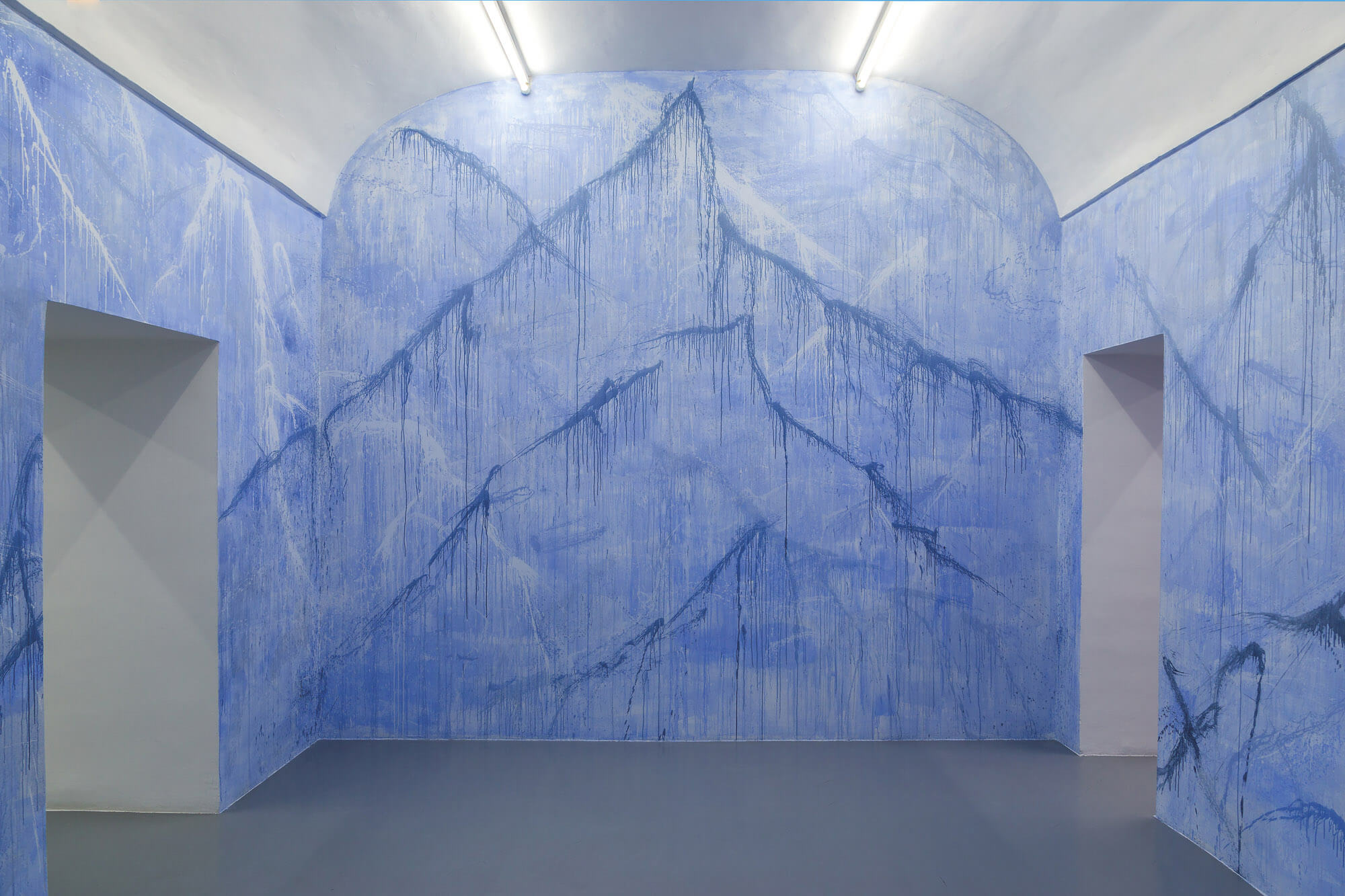
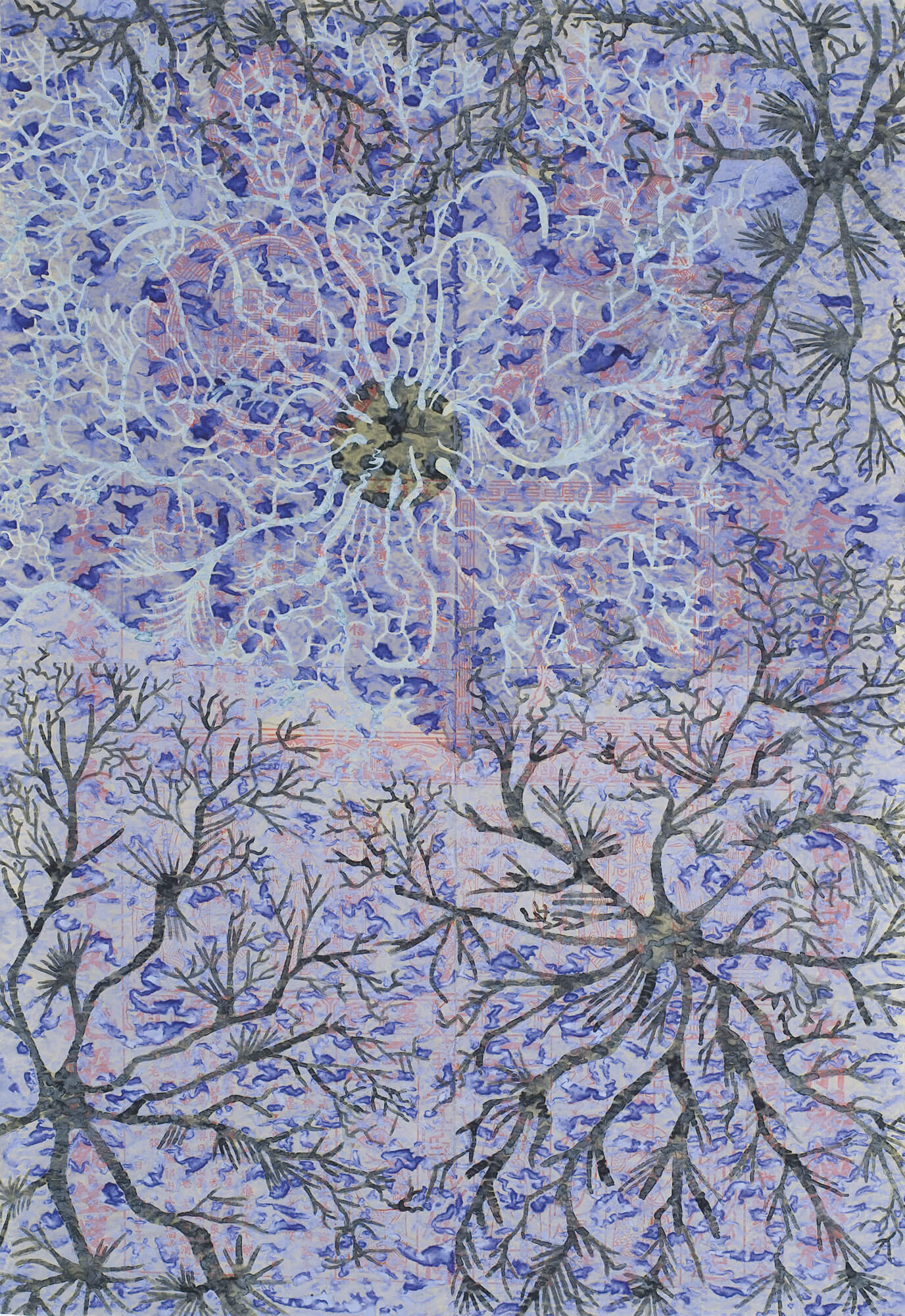
.jpg)
